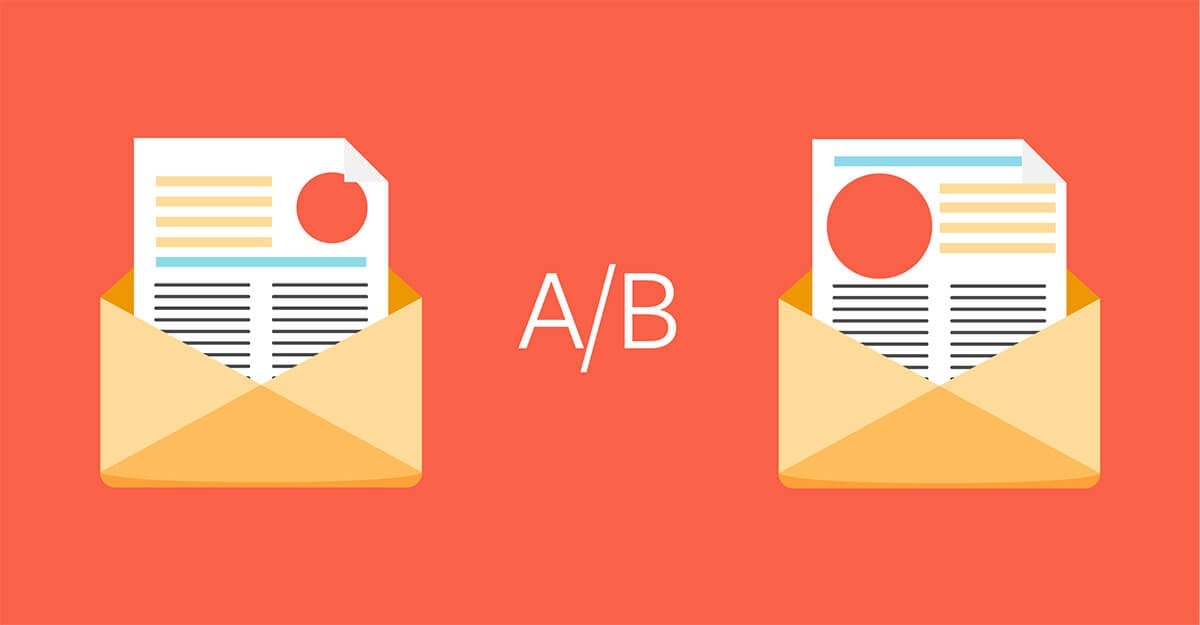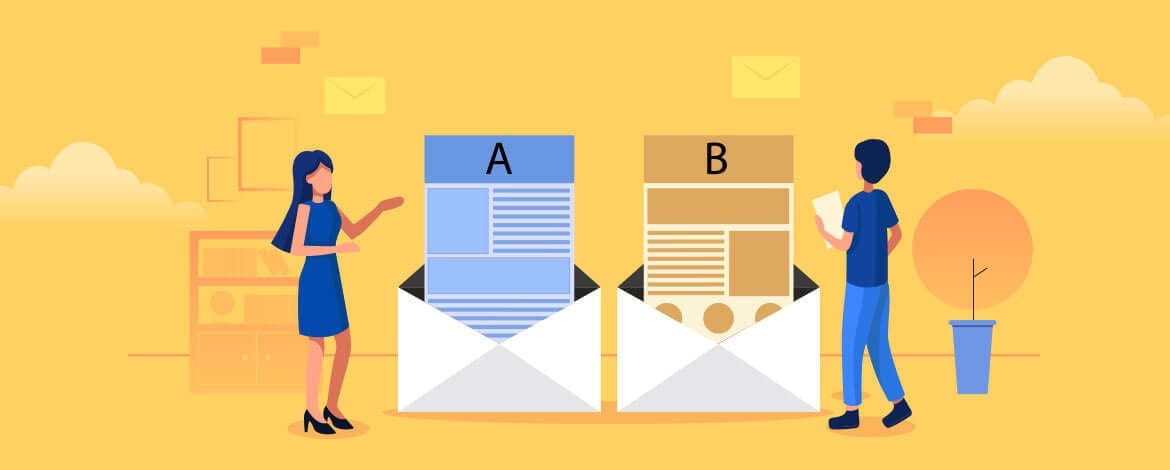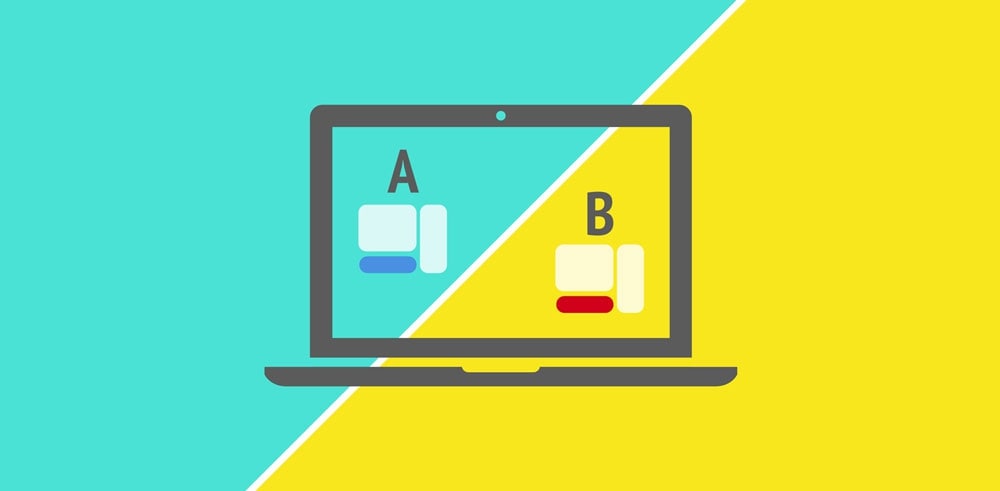How to Do A/B Testing Email
You have a fantastic idea for an email campaign. You’re certain the content is flawless, and the offer is irresistible. You’re all set to go. Everything you need is a subject line. You have two thoughts. Which one do you choose?
The majority of marketers already know the answer: you can test them both. Create an audience, then divide it in half. Half of the audience is given one subject line, while the other half is given a different one. Allow the campaign to run for a while before analyzing the results (those could be open rates, or revenue, click-through rates, or something else). The procedure is known as an A/B test.
What Is A/B Testing In Email Marketing?

In the sense of email, A/B checking refers to the method of submitting one variation of your email campaign to a subset of your mailing list subscribers and another variation to another subset of subscribers. The aim of A/B testing is to determine which element variation produces the best results and then use that variation to create the final email campaign.
Why Should You A/B Test Your Emails?
If you’ve ever read any of our email marketing how-to guides, you’ll find that no matter what campaign aspect we address, we always recommend you to A/B test your emails. There’s an explanation for this.
A/B research has a plethora of advantages that can greatly improve the effectiveness of your email campaign. When you break test email campaigns, you can:
- Instead of gut instinct or guesswork, you base your email marketing campaign decisions on solid data.
- Based on consumer responses to actual campaigns, you can determine when email marketing campaigns are effective and when they are not.
- Based on the insights you obtain, create more successful email marketing strategies, resulting in increased interaction, leads, and sales.
- Increase the number of people who open your emails, click your links, and eventually convert.
- Reduce the possibility of launching new campaigns by evaluating them before implementing permanent changes.
What elements can you do A/B testing on?

You can put almost everything to the test! You can put template and text elements to the test. In reality, testing both campaigns is necessary to determine which campaign performs better. Make sure your audience falls in love with you at first sight. You can accomplish this with a well-designed email.
However, while the design may be the reason they do not remove your email right away, the content you deliver is what really drives conversions. In the next section, we include a step-by-step guide detailing which elements you should concentrate on when beginning your A/B tests. Now let’s go through the elements you can test for your next email campaign.
Subject lines
The first thing you can do is test your subject line. Your efforts will be in vain if your target audience doesn’t even open your email. As a result, make sure your subject line entices them to open your email. You can experiment with simple messages ( such as “Our special Christmas offer for you”) or more enigmatic subject lines (Such as “You really don’t want to miss this offer”). You can also experiment with emojis, pre-header messages, and personalization to increase clicks.
Images
Now that your killer subject line has resulted in a large number of opens, you can concentrate on improving the email’s content. Pictures and other visuals would be the first thing that gets your reader’s attention. Experiment with various banners, product photos, and other eye-catching images, etc. You might also try GIFs, video previews, and other graphics to drive traffic.
The Internet loves video, and we’re guessing your audience does as well. So, are you using videos in your marketing emails? If you haven’t already, you should. It can make a significant difference. And, if you do, try some A/B checking. You may begin experimenting with the size and placement.
Email copy
Often fancy graphics and catchy subject lines aren’t enough to persuade your audience, and your paragraph texts need to do the trick. Experiment with different wording, text length, and placement. Concentrate on the main messages and wrap the rest of the elements around them. If you have an online store, you might experiment with various prices or discounts, headings, text sizes, colors, and positioning.
Calls-to-action
When your headlines, paragraph text and subtitles are optimized, your viewer is more likely to click on your CTAs (CTA). One of the most critical elements in a marketing email is the CTA button. This is the crux of the matter. Your mailing is intended to catch their attention, but it must also produce leads to your website.
So, keep this in mind during your testing. Experiment with different colors, sizes, text, and positioning. Keep in mind that the CTA text must also be important.
Links

Other links, in addition to CTAs, may be used and tested. Social media buttons are an example of these links. It is possible to communicate through multiple channels. The majority of brands now include Social Media buttons in their marketing emails, connecting to other platforms such as Twitter and Facebook. Experiment with various formats, colors, and sizes to see which ones generate the most interaction.
Time of sending
Last but not least, you should test the date and time of your campaigns. Is your target group more likely to open their emails in the morning, evening, throughout the week, or on the weekend? Use results from your test to find out, and then build segments for each to optimize interaction in the future.
How to A/B test email effectively

Set up your A/B test with your new email provider now. This method can differ slightly depending on your email provider, but it should be fairly simple. Let’s take a look at the four steps you’ll need to take in order to A/B test your email.
Step 1. Pick a variable to test.
To begin, decide which variable you want to test with your audience. This is primarily determined by the measure you wish to improve in your email marketing campaigns.
For example, if you want to increase your email open rates, you might try two separate subject lines. You may also test whether using a personal name in the sender line versus a business name makes a difference.
If you want to increase your click-through rate, you can experiment with whether a button or a hyperlink for your CTA works better, or whether changing the location of the CTA makes a big difference.
Step 2. Create two versions of the same email.
Following that, you’ll build two distinct versions of the same email. For example, suppose you want to see which subject line increases your open rates. You will build two distinct subject lines to test with your audience. Then, through your email service provider, you will begin setting up an A/B test.
Step 3. Choose your test group.
Following that, you need to choose your two testing groups. The size of your testing groups will be determined by the total number of subscribers and the campaign’s objective. In certain cases, you might want to test the entire subscriber list. This will provide you with the most realistic image of what works best for your target audience. In other instances, you can evaluate a smaller subset of your list.
For example, if you’re testing a new product with your audience, you’ll want as many conversions as possible. As a result, you might want to begin by testing it with a small portion of your list until you’re certain of what works.
But how do you determine the appropriate sample size? Here’s a decent starting point: If you have more than 1,000 subscribers on your email list, you can test 20% of them. That means you’ll send one subject line to 10% of your list, and another 10% will receive an email with a different subject line.
Step 4. Analyze and implement your results.
It’s now time to sit back and wait for your results to come in. Your email service provider should be able to tell you which subject lines were the most effective. Until you’ve determined which subject line was the most successful, you can submit the subject line to your entire list.
Of course, the job isn’t finished yet. In the future, you can continue to A/B test your email campaigns. The most important thing to remember is to only measure one variable at a time. You’ll be able to see a clear difference in the output of each email this way, while if you test several variables in one email, you’ll never know what exactly made the difference in your results.
Step 5: Choose the winner and duplicate
Once you’ve found the winning variable, use it for your final campaign. Keep in mind that A/B testing is a continuous process, since your email list keeps changing over time, as well as customers’ preferences. This does take work, but the efforts will pay off in higher engagement and more conversions.
7 Email A/B testing best practices

Apart from the steps mentioned above, you can also try out these practices to maximize the effectiveness of your A/B testing.
1. Set goals
Testing without a clear target is simply a waste of time. Don’t pick an A/B test at random for no reason. Know why you want to use split testing (to increase open rates, click rates, test new messaging, pricing models, etc.) and consider what improvements could get you the desired results.
2. Focus on frequently sent emails
When you start running A/B experiments, you’ll be hooked and want to test every single email campaign you submit. But remain calm and take a deep breath. To begin, narrow down your focus to the types of email that you send the most frequently.
3. Divide your list randomly
Before sending the campaign to the rest of your contact list, select a smaller, randomized portion of your contact list to find the most optimized email version. Make sure you use the same sample sizes to get definitive results.
4. Test one variable at a time
Focus on only one variable at a time and leave all other variables alone to determine which variation works best. Create a few different CTA colors, for example, but don’t change anything else. This allows you to determine if an improvement in interaction is due to the color of the CTA. How can you tell which change brought in the most clicks if both the color and the text are in the test at the same time?
5. Be patient
If you are automating your A/B tests by sending to a small sample first and then to the entire list once the test is finished, it is critical to wait long enough to collect enough data. We usually advise waiting 1-2 days after submitting to your sample before sending to your entire list.
6. Find the right sample size
One of the difficulties when it comes to doing email A/B testing is having a large enough sample size. You can use an A/B Sample Size Calculator, such as Optimizely, to find the right sample size.
7. Keep testing
After one test there should be more tests. Now you’ve found the best subject line, calls-to-action, and hopefully more. Next, you can try testing other elements. Rinse and repeat.
Final words
That’s it! I hope that this article has provided you with valuable information about how to do A/B testing for marketing emails. Please feel free to leave comments below for further discussion on this topic!
New Posts






